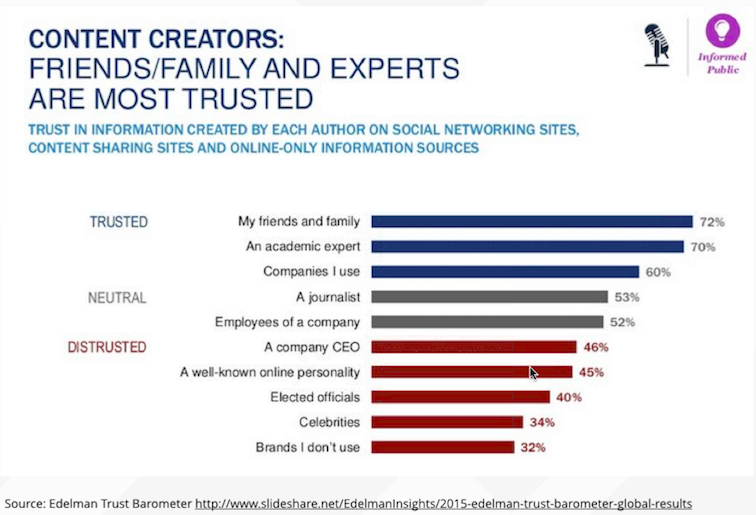
Content marketing serves as a gateway for many independent online marketing functions. It’s a reputation builder, since it serves as a brand asset to new and recurring visitors. It’s a conversion enhancer, since it entices people to buy your products and services. It’s even a rank builder, since each piece of content you develop is a new page for Google to index and more valuable material to add to your domain.
One of the best ways to ensure the success of a content marketing strategy is to get lots of links and social shares. More links and shares means more direct page rank for your article (and therefore, higher ranks in search engines), more direct traffic to your site (thanks to all the new people able to click through), and a bigger reputation—which means faster overall growth of your content campaign in the future.
Here’s the problem: how can you get these links and shares?
Here’s a scary stat: 50% of articles get 8 shares or less. You obviously can’t bribe people to link to your content, so you’re limited to more natural means. Linking and sharing are generally subjective actions, so there’s no “sure” formula for achieving them, but there are several distinct measures you can take to earn more inbound authority. Here are 7 easy ways to generate more links and shares for your content:
1. Offer original data
One of the keys to standing out is offering something that nobody else can offer. One of the keys to being seen as an authority is offering a precise data point. Thus, conducting original research is a winning strategy and the most powerful and effective format for content. Here why:
- Original research means it’s yours: If you do your own research, such as carrying out an experiment or conducting a study, you can be guaranteed that nobody has presented these results before (as long as you choose a good topic). You’ll also have specific numbers and findings that others in your industry will want to cite. This means your work will likely get shared around the community, and linked to as a verified reference in future posts.
- Data points lend credibility: numbers and statistics add validity and support for your argument
2. Express (and support) a new opinion
Don’t be afraid to be original. The idea of novelty is not limited to research, however. You can also present something new in the form of an opinion. Going with the flow is not going to earn you links; standing in stark contrast to the majority or exploring a new avenue of thinking will. Expressing a minority or novel opinion will pique people’s interests—you’ll be highlighting new elements of a familiar issue, and hopefully educating your audience. In turn, people will want to share and link to your insights. However, don’t just rant about your opinion—back it up with real evidence, and cite other sources that disagree with your stance to show you’ve considered both sides of the audience.
Curate content
You can also use the lean content marketing practice of content curation, which is a simple yet effective way to quickly create high-value, engaging content for your audience that they’ll want to share. By adding your own insight and commentary to content you’ve curated (either manually or by using a tool like Scoop.it), you’re providing added value for your readers and adding credibility and third-party validation to your efforts. And the stats don’t lie: Your content is 4x-7x less trusted than third party content. This means that your audience is more likely to share content they trust and connect with, which makes content curation a great strategy.

3. Make people laugh
There’s nothing wrong with using a little humor to get more attention to a good idea or concept. Laughter is a form of social connective tissue; we laugh most when we’re around people we like, and when we laugh, we’re prone to sharing that laughter with others we know. Long story short, if you can make a reader laugh, you can bet they’ll want to share that experience with their friends, family, and coworkers. The level of seriousness here should vary based on your brand identity; for example, you could write a high-level satire piece criticizing your industry or just include a cat meme at an opportune moment for a punchline.
4. Shock people
Don’t underestimate the power of being surprised. People love to be surprised, and it tends to carry the same social weight as humor; namely, if you shock people, they’ll want to share that shock with others (think about the strange phenomenon of making other people smell something terrible you’ve already smelled and publicly reacted to). The shock is up to you—it could be a surprising finding, a myth or misconception in your industry, or just a new approach that nobody has tried before. Just be careful not to cross into offensive territory.
A few added benefits of using the element of surprise in your content:
- wider reach
- higher inbound link potential
- makes your content more linkable
5. Offer a practical solution to a problem
“Life hacks” have become extraordinarily popular because of their concise, practical value. People love to make their lives easier, even in small ways, and if you help them do it, they’ll gladly share and link to your material. How-to articles, “why” posts, tutorials, and FAQ videos are all golden forms of content here, but as long as you’re making your readers lives easier, there are no firm rules to how you approach it.
6. Present something valuable
When you offer something valuable, people will want to send others your way. Think about the last major retail sale, restaurant special, or event discount you encountered—didn’t you want to tell all your friends about it? Offer something similarly valuable on your site, and your followers will naturally want to bring more attention to it on your behalf.
7. Improve your syndication efforts
What’s the point of creating great content if no one sees it? Content marketing is a cycle that requires optimization at every phase in order to succeed. This means you can’t just create content and expect it to magically reach your audience all on its own (although we’d like to think that was the case!). No matter how good your content is, your readers won’t find it without some help.
Promoting your content is critical, and it has little to do with the actual content of your material. Assuming you’ve tackled at least a few of the preceding items in the body of your piece, your next step is to ensure your piece is syndicated to the right audience. After all, it doesn’t matter how good your content is if no one is there to see it.
Start by publishing, syndicating, and re-sharing your piece across your own channels (usually a social media circuit and any personal brands under your corporate umbrella). You can use tools like Scoop.it that allow you to automate distribution and easily schedule and re-share content across your social channels in just minutes.
Then, take things to the next level by wooing some online influencers, who can theoretically blast your work to audiences of thousands. If your piece is truly substantial, they’ll be happy to do it.
Bonus tip: Use basic psychology to get behind what drives your readers’ motivations and incentivizes them to share more. Find out how in this article. And if you’re interested in more tips for how to write engaging, high-quality blog posts for you audience that they’ll want to share, check out this article!
Conclusion
These are all safe, legitimate means of earning more links and shares for your content. However, it won’t happen automatically. You’ll have to take it upon yourself to ensure these steps are taken with every new piece of content you produce, and follow up with consistently measured metrics to inform how effective your tactics have been. Commit yourself to self-improvement, and never be afraid to try something new—you’ll have to take risks and fight hard if you want to stand out in the oversaturated world of content marketing.
And if you’d like to see how content marketing can help you improve SEO, you should read this eBook!
Image by Robin Wirt




As a Realtor® I’m constantly trying new things in order to get a larger response and reach a bigger audience. Of the tips here, I’m attempting: • bringing together academic research • expressing a distinct opinion on the topic of real estate • throwing some humor into the mix as well as offer solutions, although not really any kind of “life hack” so to speak. I’ve put it all together in a way that hopefully is easy to navigate and for folks in my target audience to find and use in what we call our homeowner academy (although we may… Read more »
Nice example of a content hub / resource center @@LakeNormanMike:disqus! Thanks for sharing. I took a quick look and it’s great. While I’m sure content and presentation can always been improved, I felt maybe the lowest hanging fruit would be to work on the call-to-actions between your blog and these top resources you have in the academy. If you look at our blog, we almost systematically offer at the end of a post to explore a related topic or to deep dive on the post’s topic with one of our eBooks which are our top resources that we present in… Read more »
Wow. Great Share. Thank you.